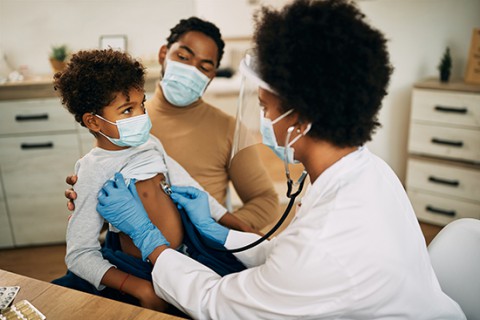
All children should be screened for the risk of cardiac arrest regardless of their athletic status, according to the updated American Academy of Pediatrics (AAP) policy statement Sudden Death in the Young: Information for the Primary Care Provider.
The policy, from the AAP Section on Cardiology and Cardiac Surgery and the Pediatric & Congenital Electrophysiology Society (PACES), offers primary care providers a strategy for screening, evaluating and managing risk of sudden cardiac arrest (SCA) and sudden cardiac death (SCD) in youths. It is available at https://doi.org/10.1542/peds.2021-052044 and will be published in the July issue of Pediatrics.
The unexpected death of a seemingly healthy child is a tragedy not only for the family but for the community as well. Multiple studies have looked at sudden deaths in young people either as a whole or by individual disease processes. However, most of these studies are published in cardiology journals. The goal of the AAP-PACES policy is to present expanded information to pediatricians and other primary care providers.
The policy identifies channelopathies, cardiomyopathies and other conditions that can pose a risk for SCA. It includes tables to help identify the features of channelopathies and cardiomyopathies, along with diagnostic methods to distinguish these entities.
The authors address who should be screened (athletes vs. all children) for conditions that predispose children to SCA (primary prevention). They emphasize that no subgroup, such as athletes, should be the only ones screened.
SCA/SCD screening should be performed during the preparticipation physical evaluation or at least every three years or on entry into middle/junior high school and high school. Four recommended questions can be incorporated into the routine visit (see below).
The goal of screening is to identify those at risk for SCD. While it is beneficial to identify children with any cardiac defect for possible treatment or follow-up, many congenital heart defects do not inhibit children from attending school or participating in activities nor do they pose a risk of cardiac arrest.
Realizing that primary prevention methods are less than perfect, the policy considers secondary prevention, including the creation of a cardiac emergency response plan for schools (https://bit.ly/3hZWTIa) and the role of the primary care provider as an advocate for CPR and automated external defibrillator training. It also provides information on the family evaluation following a cardiac arrest/death, including addressing bereavement, autopsies and genetic testing. Lastly, there is a section for survivors of cardiac arrest on returning to activity after recovery.
The policy serves as a reasonably comprehensive guide for the primary care provider as to the conditions meriting caution and evaluation as well as how to handle a SCA/death in a young patient.
Takeaway points
The following are among the recommendations in the policy:
- Primary care providers should be aware of features of the clinical history, family history and physical examination suggestive of a risk for SCA/SCD.
- All children should be evaluated for conditions predisposing to SCA/SCD in the course of routine health care.
- A thorough history, family history and physical examination are necessary to begin assessing for SCA/SCD risk.
- The ECG should be the first test ordered when there is concern for SCA risk. It should be interpreted by a physician trained in recognizing electrical heart disease.
- Survivors of SCA and family members of those with SCA or SCD should have a thorough evaluation to assess for a potential genetic etiology.
Drs. Erickson and Salerno are lead authors of the policy statement.
Screening questions
Primary care providers can incorporate the following questions into the routine visit:
- Have you ever fainted, passed out or had an unexplained seizure suddenly and without warning, especially during exercise or in response to sudden loud noises such as doorbells, alarm clocks and ringing telephones?
- Have you ever had exercise-related chest pain or shortness of breath?
- Has anyone in your immediate family (parents, grandparents, siblings) or other more distant relatives (aunts, uncles, cousins) died of heart problems or had an unexpected sudden death before age 50? This would include unexpected drownings, unexplained car accidents in which the relative was driving or sudden infant death syndrome.
- Are you related to anyone with hypertrophic cardiomyopathy or hypertrophic obstructive cardiomyopathy, Marfan syndrome, arrhythmogenic right ventricular cardiomyopathy, long QT syndrome, short QT syndrome, Brugada syndrome or catecholaminergic polymorphic ventricular tachycardia, or anyone younger than 50 years with a pacemaker or implantable defibrillator?
SOURCE: American Academy of Pediatrics
